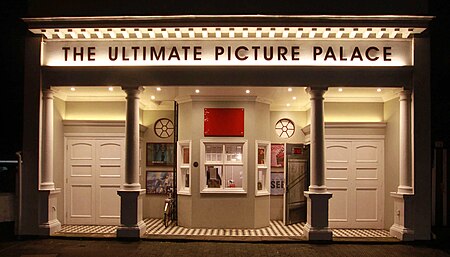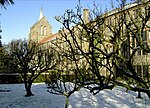Ultimate Picture Palace
1911 establishments in England1917 disestablishments in England1976 establishments in England1994 disestablishments in England1996 establishments in England ... and 12 more
Cinemas in OxfordshireCulture in OxfordEngvarB from November 2017Entertainment companies disestablished in 1917Entertainment companies disestablished in 1994Entertainment companies established in 1911Entertainment companies established in 1976Entertainment companies established in 1996Grade II listed buildings in OxfordHistory of OxfordRe-established companiesTheatres completed in 1911

The Ultimate Picture Palace is an independent cinema in Oxford, England. It is Oxford's only surviving independent cinema, showing a mixture of independent, mainstream, foreign language, and classic films. The cinema has been a Grade II listed building since 1994.
Excerpt from the Wikipedia article Ultimate Picture Palace (License: CC BY-SA 3.0, Authors, Images).Ultimate Picture Palace
Cowley Road, Oxford East Oxford
Geographical coordinates (GPS) Address Website Nearby Places Show on map
Geographical coordinates (GPS)
| Latitude | Longitude |
|---|---|
| N 51.748704 ° | E -1.239333 ° |
Address
Big Society
Cowley Road 95
OX4 1HR Oxford, East Oxford
England, United Kingdom
Open on Google Maps









